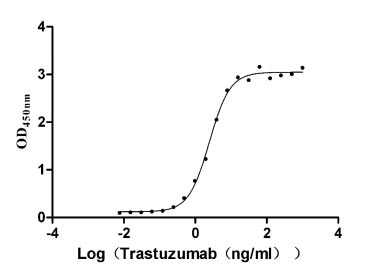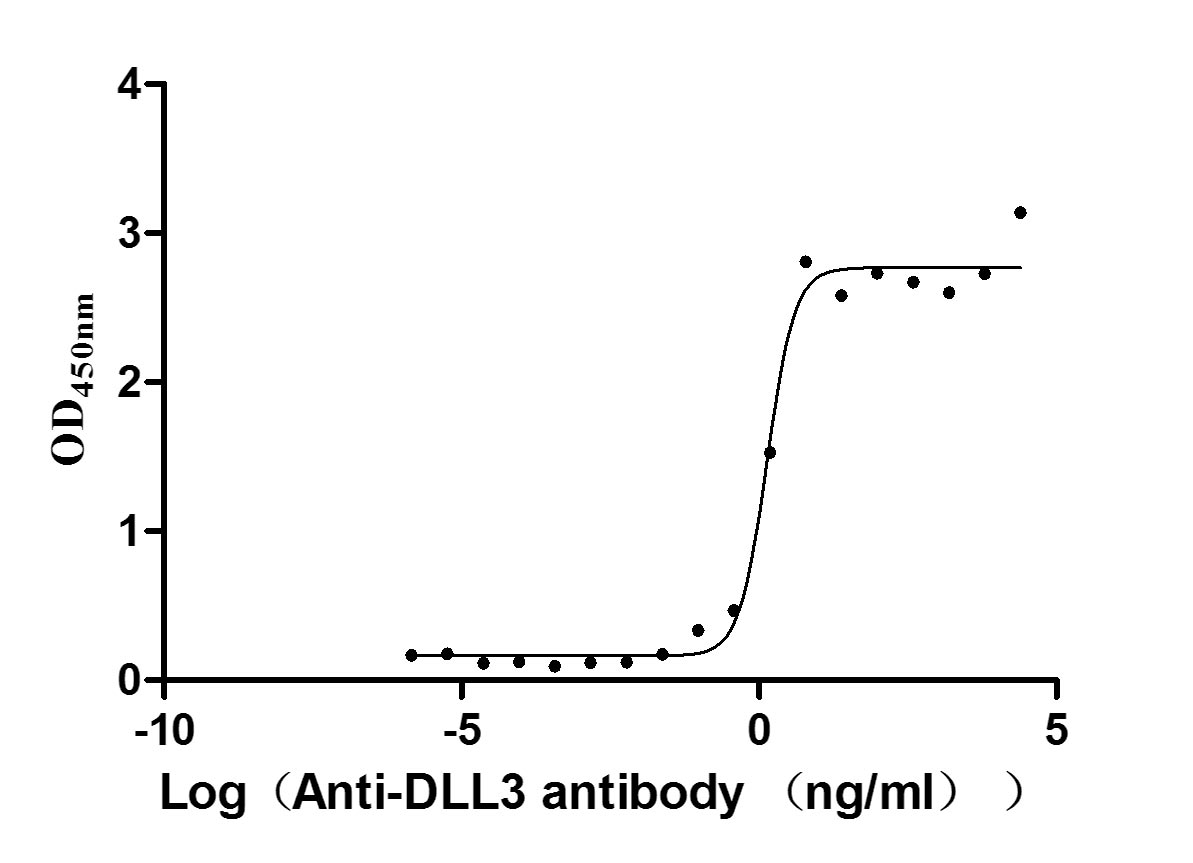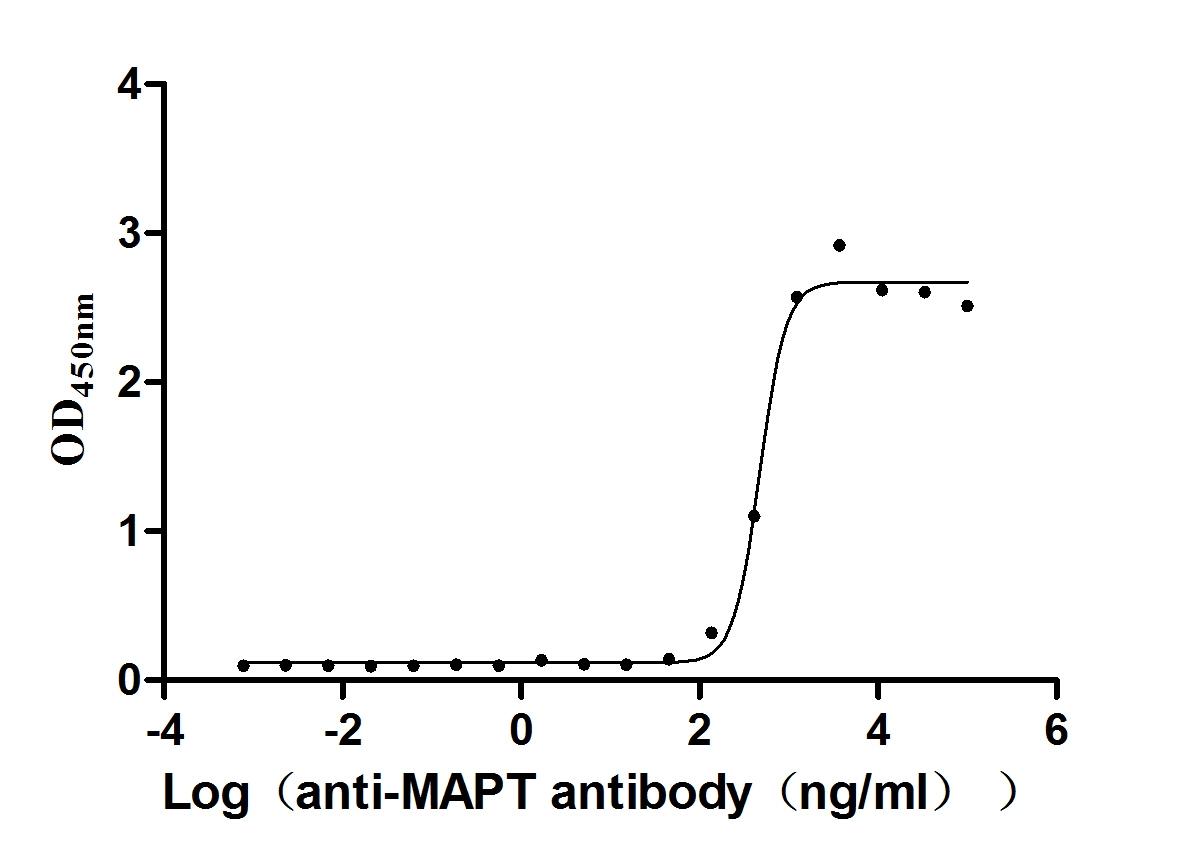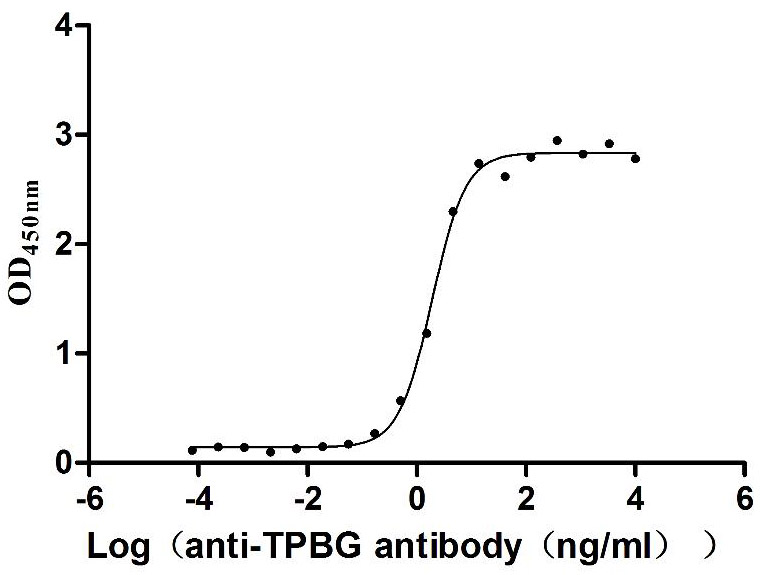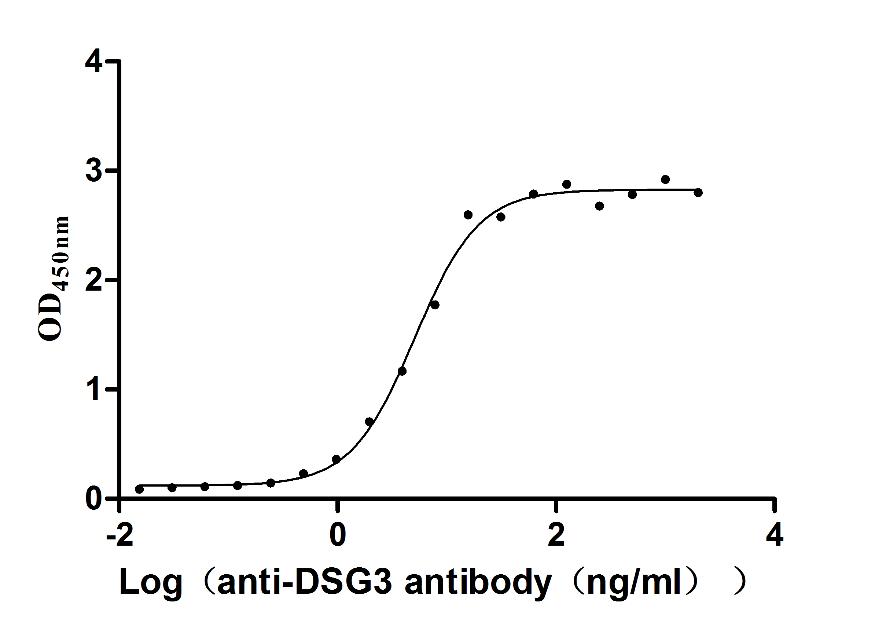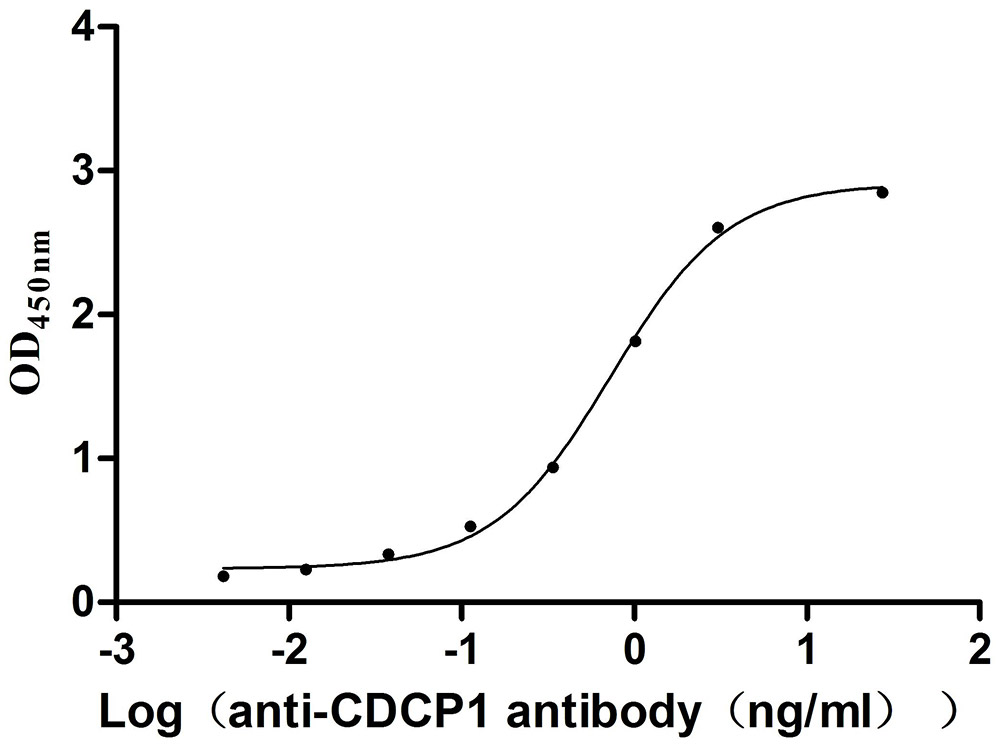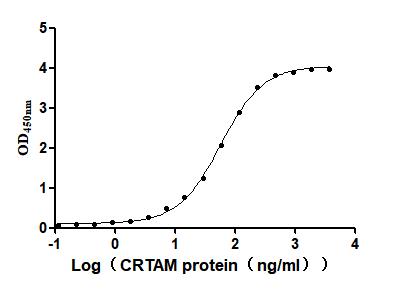Recombinant Human Zinc finger and BTB domain-containing protein 16 (ZBTB16 PLZF ZNF145)
-
中文名稱:
-
貨號:CSB-YP963100HU
-
規格:
-
來源:Yeast
-
其他:
-
中文名稱:
-
貨號:CSB-EP963100HU
-
規格:
-
來源:E.coli
-
其他:
-
中文名稱:
-
貨號:CSB-EP963100HU-B
-
規格:
-
來源:E.coli
-
共軛:Avi-tag Biotinylated
E. coli biotin ligase (BirA) is highly specific in covalently attaching biotin to the 15 amino acid AviTag peptide. This recombinant protein was biotinylated in vivo by AviTag-BirA technology, which method is BriA catalyzes amide linkage between the biotin and the specific lysine of the AviTag.
-
其他:
-
中文名稱:
-
貨號:CSB-BP963100HU
-
規格:
-
來源:Baculovirus
-
其他:
-
中文名稱:
-
貨號:CSB-MP963100HU
-
規格:
-
來源:Mammalian cell
-
其他:
產品詳情
-
純度:>85% (SDS-PAGE)
-
基因名:ZBT16
-
Uniprot No.:
-
別名:Zinc finger and BTB domain-containing protein 16; Promyelocytic leukemia zinc finger protein; Zinc finger protein 145; Zinc finger protein PLZF; ZBTB16 PLZF ZNF145
-
種屬:Homo sapiens (Human)
-
蛋白標簽:Tag?type?will?be?determined?during?the?manufacturing?process.
The tag type will be determined during production process. If you have specified tag type, please tell us and we will develop the specified tag preferentially. -
產品提供形式:Liquid or Lyophilized powder
Note: We will preferentially ship the format that we have in stock, however, if you have any special requirement for the format, please remark your requirement when placing the order, we will prepare according to your demand. -
復溶:We recommend that this vial be briefly centrifuged prior to opening to bring the contents to the bottom. Please reconstitute protein in deionized sterile water to a concentration of 0.1-1.0 mg/mL.We recommend to add 5-50% of glycerol (final concentration) and aliquot for long-term storage at -20℃/-80℃. Our default final concentration of glycerol is 50%. Customers could use it as reference.
-
儲存條件:Store at -20°C/-80°C upon receipt, aliquoting is necessary for mutiple use. Avoid repeated freeze-thaw cycles.
-
保質期:The shelf life is related to many factors, storage state, buffer ingredients, storage temperature and the stability of the protein itself.
Generally, the shelf life of liquid form is 6 months at -20°C/-80°C. The shelf life of lyophilized form is 12 months at -20°C/-80°C. -
貨期:Delivery time may differ from different purchasing way or location, please kindly consult your local distributors for specific delivery time.Note: All of our proteins are default shipped with normal blue ice packs, if you request to ship with dry ice, please communicate with us in advance and extra fees will be charged.
-
注意事項:Repeated freezing and thawing is not recommended. Store working aliquots at 4°C for up to one week.
-
Datasheet :Please contact us to get it.
相關產品
靶點詳情
-
功能:Acts as a transcriptional repressor. Transcriptional repression may be mediated through recruitment of histone deacetylases to target promoters. May play a role in myeloid maturation and in the development and/or maintenance of other differentiated tissues. Probable substrate-recognition component of an E3 ubiquitin-protein ligase complex which mediates the ubiquitination and subsequent proteasomal degradation of target proteins.
-
基因功能參考文獻:
- ZBTB16 is a sensitive and specific marker for yolk sac tumour (YST) and is diagnostically superior to AFP and glypican-3 in metastatic and extragonadal settings. PMID: 28581124
- Selected gene variants of the transcription factor ZBTB16 influence obesity-related parameters and serum lipid levels. PMID: 28948827
- ZBTB16 is a highly sensitive and specific marker for yolk sac tumors. PMID: 26916077
- Low ZBTB16 expression is associated with tongue squamous cell carcinoma. PMID: 28038473
- High PLZF expression is associated with acute myeloid leukemia. PMID: 28416638
- Emerging evidence shows that PLZF regulates the balance of self-renewal and differentiation in stem cells. PMID: 26676652
- integration of PLZF ChIP-Seq and RNA Pol II RNA-Seq datasets revealed that the early growth response 1 (EGR1) transcription factor is a PLZF target for which its level of expression must be reduced to enable progesterone dependent hESC decidualization PMID: 27035670
- NLRP7 is involved in Hydatidiform Molar Pregnancy (HYDM1) and interacts with the transcriptional repressor ZBTB16 PMID: 26121690
- These results support a prognostic value for loss of cytoplasmic PLZF expression in the stratification of non-small cell lung cancer and a possible role of cytoplasmic shift and down-regulation of PLZF in the pathogenesis of NSCLC. PMID: 26297253
- down-regulation of PLZF is an important molecular process for prostate tumor progression PMID: 25807461
- Down-regulation of PLZF in human hepatocellular carcinoma.PLZF expression was positively correlated with the alkaline phosphatase level in hepatocellular carcinoma patients. PMID: 25369784
- In dental follicle cells, a Runx2-independent differentiation mechanism exists that is regulated by ZBTB16. PMID: 24816988
- PLZF loss enhances castration-resistant prostate cancer tumor growth in a xenograft model. PMID: 25808865
- Data suggest that interleukin-32alpha (IL-32alpha) associates with leukemia zinc finger (PLZF) and protein kinase c epsilon (PKCvarepsilon), and then inhibits PLZF sumoylation, resulting in suppression of the transcriptional activity of PLZF. PMID: 25178676
- PLZF regulates CCR6 and is critical for the acquisition and maintenance of the Th17 phenotype in human cells. PMID: 25833398
- Authors found that PLZF mediates suppression of miR-146a to control increases of CXCR4 and TRAF6 protein levels in human primary CD4(+) T lymphocytes. PMID: 25705792
- Data indicate that normal ovarian tissues strongly expressed histone H1.5, whereas ovarian granulosa cell tumors (GCTs) weakly expressed this protein; in contrast, PLZF protein expression was not significantly different between both study groups. PMID: 25023763
- When comparing benign and malignant uterine tumors, statistically significant differences were found in staining patterns for PLZF. PMID: 24784718
- a PTEN/PLZF pathway and would shed new lights for developing therapeutic strategy of prostate cancer PMID: 24339862
- present study shows that ZBTB16 induced the expression of osteogenic differentiation markers independently of RUNX2. PMID: 24359167
- High cytoplasmic expression of PLZF is associated with capsular invasion and lymph node metastasis in thyroid neoplasms. PMID: 24990570
- The aim of this study was to analyse the contribution of constitutive (P)RR activity to its cellular effects and the relevance of prorenin glycosylation on its ligand activity. PMID: 24424509
- PLZF can directly repress transcription of CDKN1A encoding p21 PMID: 24821727
- overexpression of PLZF and exclusion of NK cells in dysplastic microenvironment are very early events in the stepwise sequence leading to CRC. PMID: 24348178
- TL1A, together with IL-12, IL-15 and IL-18, directly induces the production of IL-6 and TNF-alpha from PLZF leukocytes. PMID: 24416448
- Plzf was identified as a specific interacting protein of Znf179; the region containing the first two zinc fingers is critical for its interaction with Znf179. Cellular localization of Znf179 changed from cytoplasm to nucleus when Plzf was co-expressed. PMID: 24359566
- PLZF may have a role in the pathway of drug resistance associated with a TRAV1-2-TRAJ33 TCR-alpha rearrangement in peripheral T-cell lymphomas PMID: 24764561
- This study showed that reduced expression of PLZF was found to be common in nonsmall cell lung cancer; PLZF down-regulation was partially correlated with hypermethylation in the promoter region. PMID: 23804241
- RARalpha-PLZF fusion protein inhibits myeloid cell differentiation through interactions with C/EBPalpha tethered to DNA in acute promyelocytic leukemia. PMID: 23898169
- Promyelocytic leukemia zinc finger and histone H1.5 differentially stain low- and high-grade pulmonary neuroendocrine tumors. PMID: 23416030
- The p65 PLZF isoform is crucial to maintain colorectal cancer cell growth, adhesion and survival, and must occur independently of the traditionally viewed transcriptional role of PLZF in the course of these biological processes. PMID: 23280881
- Our findings identify a previously unknown pathway of regulation of innate-like T-cell homeostasis depending on XIAP and PLZF. PMID: 23223428
- Expression of the promyelocytic leukemia zinc-finger in T-lymphoblastic lymphoma and leukemia has strong implications for their cellular origin and greater association with initial bone marrow involvement. PMID: 22555178
- Far infrared rays induce the nuclear translocation of PLZF which inhibits VEGF-induced proliferation in HUVECs. PMID: 22292015
- PLZF appears to control the development and/or function of a wide variety of human lymphocytes that represent more than 10% of the total PBMCs. PMID: 21915328
- Small interfering RNA-mediated gene silencing of ZNF145 slowed down chondrogenesis, whereas overexpression of ZNF145 enhanced chondrogenesis. PMID: 21547890
- Although PLZF is known to direct the effector program of natural killer (NK)T cells, this study shows that CD1d naive-like cells express it at a significantly lower amount than NKT cells. PMID: 21632718
- CUX1 interacts in vivo with multiple DNA-binding sites in the 5'-UTR and promoter of the PLZF gene in colorectal cancer cells PMID: 20945532
- Data indicate that deletions of PLZF are a common occurrence in MM and that downregulation of PLZF may contribute to MM pathogenesis by promoting cell survival. PMID: 20010871
- a substantial number of fetal thymocytes and splenocytes express PLZF and acquire innate characteristics during their development in humans. PMID: 20038602
- Data show that PLZF-RARalpha binds to a region of the c-MYC promoter, suggesting that PLZF-RARalpha may act as a dominant-negative version of PLZF by affecting the regulation of shared targets. PMID: 19855079
- two critical hits for promyelocytic leukemia PMID: 11106752
- PLZF/RARalpha also binds the HD-NCR through the PLZF, which seems to be crucial for the t-RA resistance of t(11;17) APL patients PMID: 11920278
- can interact with GATA-2 and can modify GATA-2 transactivation capacity PMID: 11964310
- evidence of a functional interaction between the promyelocytic leukemia zinc finger protein (PLZF) and DRAL/FHL2 PMID: 12145280
- PLZF plays a significant stimulatory role in megakaryocytic development, seemingly mediated in part by induction of TpoR expression at transcriptional level. PMID: 12242665
- Hoxb2 is a direct target for regulation by PLZF in the developing CNS and suggest that deregulation of Hox gene expression may contribute to APL pathogenesis. PMID: 12802276
- gene expression regulation in human endometrial stromal cells and myometrial smooth muscle cells PMID: 12970399
- PLZF expression maintains a cell in a quiescent state by repressing c-myc expression and preventing cell cycle progression. PMID: 14645547
- An inactive mutant of PLZF abolishes expression of p85 alpha PI3K followed by enhanced p70(S6) kinase. PMID: 14657020
顯示更多
收起更多
-
相關疾病:Skeletal defects, genital hypoplasia, and mental retardation (SGYMR)
-
亞細胞定位:Nucleus. Nucleus, nuclear body.
-
蛋白家族:Krueppel C2H2-type zinc-finger protein family
-
組織特異性:Within the hematopoietic system, PLZF is expressed in bone marrow, early myeloid cell lines and peripheral blood mononuclear cells. Also expressed in the ovary, and at lower levels, in the kidney and lung.
-
數據庫鏈接:
Most popular with customers
-
Recombinant Human Receptor tyrosine-protein kinase erbB-2 (ERBB2), partial (Active)
Express system: Mammalian cell
Species: Homo sapiens (Human)
-
Recombinant Human Delta-like protein 3 (DLL3), partial (Active)
Express system: Mammalian cell
Species: Homo sapiens (Human)
-
Recombinant Mouse Microtubule-associated protein tau (Mapt) (Active)
Express system: Mammalian cell
Species: Mus musculus (Mouse)
-
Recombinant Macaca fascicularis Trophoblast glycoprotein (TPBG), partial (Active)
Express system: Mammalian cell
Species: Macaca fascicularis (Crab-eating macaque) (Cynomolgus monkey)
-
Recombinant Human Desmoglein-3 (DSG3), partial (Active)
Express system: Baculovirus
Species: Homo sapiens (Human)
-
Recombinant Human Early activation antigen CD69 (CD69), partial (Active)
Express system: Mammalian cell
Species: Homo sapiens (Human)
-
Recombinant Mouse CUB domain-containing protein 1 (Cdcp1), partial (Active)
Express system: Mammalian cell
Species: Mus musculus (Mouse)
-
Recombinant Mouse Cytotoxic and regulatory T-cell molecule (Crtam), partial (Active)
Express system: Mammalian cell
Species: Mus musculus (Mouse)


